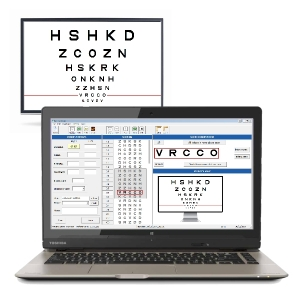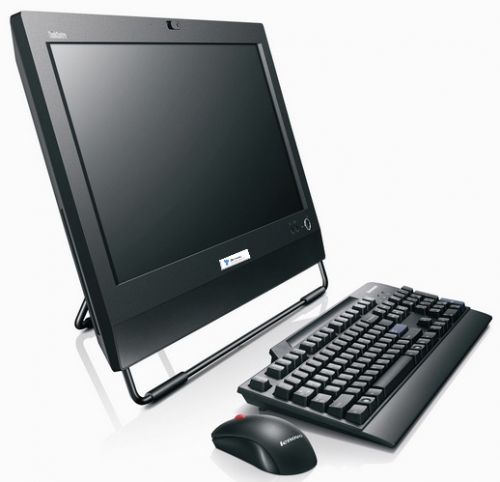Test Chart 2016 will run on any PC running Windows 7 or later. This includes desktops, laptops and even Windows tablets.
Laptops

For domiciliary work a laptop is ideal. Place the laptop on a suitable flat surface, measure the distance to the patient and enter this into Test Chart 2016 . The program will then scale everything appropriately for this distance and you have your full battery of consulting room tests available wherever you are. The IR remote control is very useful under these conditions as it allows you to control the program from up to 10 metres away which avoids having to walk to and fro to use the keyboard.
Some practitioners also use a laptop in the consulting room, either using the laptop display or connecting a separate monitor.
To use the laptop display you obviously need to mount the laptop at a suitable position in the consulting room, either above the patient’s head (for mirror viewing) or at the other end of the consulting room for direct viewing. In either case you will probably need to use the remote control to operate the program. Modern laptop screens are generally adequate for displaying test stimuli. However, if you intend to use an older model you should check the luminance and contrast of the display.
Alternatively, you can plug an external monitor into most laptops. This allows you to have the laptop in front of you and a second display mounted on the wall for the patient to view. This can work well but make sure that the laptop can support the resolution of the second monitor, i.e. if the second monitor has a resolution of 1280 by 1024, check that your laptop can support this resolution. Most modern laptops support two independent monitors. This means that you can display the test chart on an external monitor while using the laptop monitor to view another program.
Desktop PCs are generally cheaper than laptops for a given specification. However they do take up a bit more room in the consulting room (although many compact models are now available).
If you are pushed for space, you might consider the Integra systems available from Thomson Software Solutions. These systems incorporate a PC and a high quality display screen in one unit. Simply mount it on the wall, plug it in and you have a computerised Test Chart out of the box.

One of the main advantages of a desktop is that they can usually support two monitors. This means that one monitor can be dedicated to displaying the test chart while the other can be used for operating practice management software, imaging programs, word-processing or whatever. This is probably the ideal set up in the consulting room.